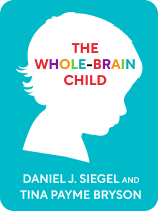

This article is an excerpt from the Shortform book guide to "The Whole-Brain Child" by Daniel J. Siegel and Tina Payne Bryson. Shortform has the world's best summaries and analyses of books you should be reading.
Like this article? Sign up for a free trial here .
What is the best way to address child misbehavior problems? What can you do to help your child calm down and approach the situation from the place of reason as opposed to emotion?
Most child misbehavior problems can be attributed to their inability to self-regulate emotionally. When a child is in the midst of an emotional takeover, they are not capable of processing your reasoning. Therefore, the only way to address the problem is to connect with emotions, and only then, redirect to logic.
Here is a helpful strategy to help you address child misbehavior problems.
Addressing Child Misbehavior Problems
When your child is in the midst of an emotional flood of pent-up frustrations or irrational fears, her right brain has taken over and created a barrier to her logical left brain. If you try to cut through her flood of emotions with logic, she won’t be able to process your reasoning. Instead, connect with her first on an emotional level, so that she feels understood. Then, as she calms down, integrate her left brain by redirecting her attention to reasoning.
Here’s how the strategy played out in one instance between one of the authors and her 7-year-old son: Not long after bedtime, Tina’s son got out of bed and told her that he felt that she never did anything nice for him, he hated homework, and he was mad that his birthday was still 10 months away.
Instead of scolding him for getting out of bed or dismissing his grievances, Tina applied this strategy:
1) Connect with the right brain: Tina recognized that her son was simply overwhelmed with feelings. She needed to let her son know that she understood and cared about his concerns. Even when your child’s concerns seem trivial or bizarre, they matter to him, and your response should respect that.
Tina connected with her son through right-brain nonverbal communication: She embraced him, rubbed his back, and spoke to him in a nurturing voice. This response gave her son the emotional space to explain that he felt that his brother got more of Tina’s attention, and that homework ate up too much of his leisure time. As he spoke, his emotional flood ebbed.
2) Redirect to the left brain: At this point, Tina’s son was calm enough that he could be receptive to some logic. Tina addressed each of his concerns with explanations and plans, which helped her son connect the emotions he was feeling with logical resolutions. For example, she suggested that they brainstorm how to make homework more pleasant.
Even if Tina had suspected her son’s complaints were a ploy to delay going to sleep, the connect-and-redirect strategy was the most efficient and effective way of getting him back to bed quickly. If she had simply scolded him, the situation may have escalated into a struggle that would have upset them both and taken more time to resolve.
Keep in mind that while a right-brain takeover may explain your child’s emotional behavior, it doesn’t excuse your child for breaking rules. If your child is acting inappropriately, stop the bad behavior, connect with her emotionally, give her time to calm down, and then engage her left brain while talking about why her behavior was unacceptable and what the consequences will be.
Applying This Strategy to Left-Brain Takeovers
Paradoxically, the same approach applies not just to right-brain takeovers, but also to left-brain takeovers, when your child denies her emotions and retreats to her left brain. The reason is that emotions are still at the root of the problem—your child is simply reacting to them differently.
Use nonverbal cues to show interest in how your child is feeling. Help her identify her physical sensations, so that she can recognize the emotions behind them (for example, you physically tense up when you’re stressed or upset). Once your child reconnects with her right brain, connect with her emotionally, and then integrate the left brain.
Tips for Using This Strategy at Different Ages
Tailor this strategy to your child’s age and developmental maturity with these tips.
Ages 0-3: Begin teaching your child about emotions from a young age. When your child acts out, first, identify your child’s emotion, tell her that you recognize that she’s feeling that way, and use nonverbal communication to reinforce your understanding and empathy. Second, after your child feels seen and understood, make it clear why her behavior was inappropriate. Third, suggest an acceptable, alternative behavior, or simply shift to another activity.
Ages 3-9: Since your child is old enough to verbalize how she’s feeling, hear her out. Then, reiterate what you’ve heard from her, in order to show her that you hear her and you understand. Finally, talk to her about a more appropriate way to behave, and work with her to problem solve. For example, if she lashed out because she’s frustrated and disappointed that her friend canceled their playdate today, brainstorm another activity she can do today, or another day they can reschedule the playdate.
Ages 9-12: As you listen to your child and mirror back her feelings, be cautious to avoid sounding patronizing. Since your child is beginning to grapple with new aspects of maturity and independence, show her respect by clearly explaining the natural consequences of her actions or your reasoning in doling out discipline, if necessary.

———End of Preview———
Like what you just read? Read the rest of the world's best book summary and analysis of Daniel J. Siegel and Tina Payne Bryson's "The Whole-Brain Child" at Shortform .
Here's what you'll find in our full The Whole-Brain Child summary :
- How to increase your child's self-awareness and emotional control
- Why the logical and emotional sides of the brain have to work together
- How to figure out why your child is afraid of something






